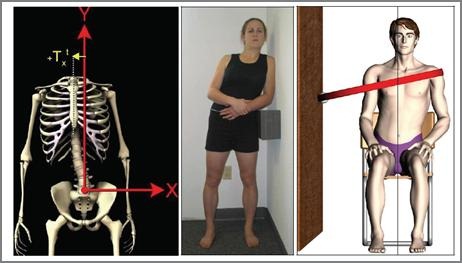

It may reduce or eliminate pain in the near term, but symptoms can return later because of instability of the spine. Simply removing material from the spine can cause a problem down the road. The aging of joints, combined with a fracture at a level above a previous fusion, can also cause a significant deformity. The passage of time after a spine surgery is a leading cause of spinal deformity. Previous spine surgery ( adjacent level disease).Osteoporosis (loss of bone mass) and vertebral compression fractures.Arthritis from degenerative discs and facet joint syndrome, resulting in the loss of normal vertebral alignment (Fig.Other conditions that might cause degeneration include: When joints deteriorate, arthritis can develop and the spinal column can shift sideways. What are the causes?Īs you get older, your bones undergo degenerative changes that are part of the natural aging process. Foraminal stenosis occurs on the inside of the tilt and pinches the nerve. Degenerative discs and facet joints can cause the column of bones to tilt, rotate, and slip (listhesis). They also may have difficulty lying flat.įigure 3. Hunched over while standing, they may become quickly fatigued and have difficulty talking to others or maintaining eye contact. Patients with kyphosis have lost their ability to stand up straight. This imbalance can result in strain on the hips and knees, the inability to walk a straight line, and falls. Symptoms of severe, progressive scoliosis are similar to those of stenosis, but with visible spinal imbalance. In more severe cases, scoliosis can cause shooting pain down the leg ( sciatica), an inability to stand up straight, and an inability to walk more than a short distance. When pain does occur, a pinched nerve is typically the cause, not the curvature. Not all adults with degenerative scoliosis experience pain. Symptoms include pain or stiffness in the mid-to-lower back, and numbness or weakness in the legs or feet. It falls along a spectrum, from mild to moderate to severe.

LordosisĪlso called swayback, lordosis is a condition in which the spine curves significantly inward at the lower back, giving a backward leaning appearance. In this situation, the spine has weakened right above the fusion, causing the patient's posture to bend forward. A patient who has had a previous lumbar fusion may develop a junctional kyphosis. These patients can develop what is called "flat back syndrome," which means they have lost some of the natural lordosis (inward curvature) of their lower spine. It limits function and results in a common complaint among older people: "I can't stand up straight." Another common scenario is a patient who has previously had one or more spine surgeries. It can also occur in the lower (lumbar) spine. In the upper (thoracic) back, kyphosis is commonly due to osteoporotic compression fractures. Kyphosis is an abnormal forward rounding (more than 50 degrees of curvature) of the spine. When these joints deteriorate, the spine bones can tilt and begin to shift to one side. The facet joints give the spine flexibility, enabling us to twist, stretch, or curl up on the couch. Scoliosis is a side-to-side curvature of the spine that can develop in adults when their facet joints and discs begin to deteriorate (Fig. Types of spinal deformities: a side-to-side curve is called scoliosis a forward curve (kyphosis) shifts the center of balance in front of the hip a concave lower back (lordosis) thrusts the hips forward. This strong, tripod design keeps the bones connected and aligned, one on top of the other, while allowing our spine to bend and twist.įigure 2. Each vertebra has a three-joint complex with a large disc in the front and two facet (pronounced fah-CETTE) joints in the back. The bones are separated by discs, which act as shock absorbers and give the spine flexibility. The spine is a column of 24 moveable bones called vertebrae that are connected to one another by ligaments.

Treatment can include medications, physical therapy, injections, or surgery. Pain results from stressed joints and pinched nerves, not the abnormal curve. Moderate deformity occurs when the facet joints and discs deteriorate over time and are no longer able to support the spine's normal posture. Adult scoliosis and kyphosis can be caused by age-related wear and tear on the back or complications from past surgeries. Spinal deformity is an abnormal alignment or curve of the bony vertebral column. Spinal Deformity: Adult Degenerative Scoliosis Overview


 0 kommentar(er)
0 kommentar(er)
